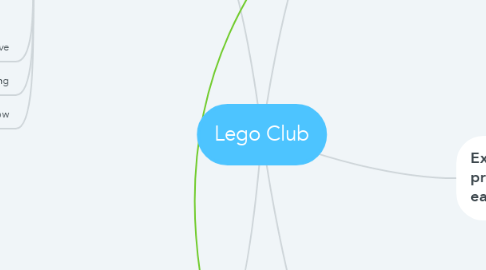
1. Why this therapy works versus others
1.1. Interest and motivation to participate
1.1.1. Constructive application
1.1.1.1. Lego sets can become more complex
1.2. The model require social interaction and communication
1.2.1. Improves independent social motivation
1.3. Engaging, inviting and a safe experience
1.4. External rewards can improve compliance but are short lived.
1.5. Popular with parents
1.5.1. Children highly motivated to participate
1.5.2. Siblings were included in younger groups as “helpers”
1.5.2.1. Familiar with the problems of their sibling
1.6. Children found this enjoyable, stress-free and motivating
2. The Strategy
2.1. Dividing the jobs
2.1.1. Creator
2.1.1.1. Verbal discriptions
2.1.1.2. Designing
2.1.2. Builder
2.1.2.1. Joint and interactive jobs
2.1.2.1.1. Sharing
2.1.2.1.2. Turntaking
2.1.2.1.3. Eye contact
2.1.2.1.4. Following social rules
2.1.2.1.5. Using greetings and names
2.1.2.2. Following directions
2.1.2.3. Collected and put pieces together
2.1.3. Helper
2.1.3.1. Small confidence building tasks
2.1.3.2. Extra professional input
2.2. Structured and comprehensive
2.3. Set building
2.3.1. Checking between plan and creation
2.4. Consistent set of rules to follow
2.4.1. To review every session with the young people
3. Benefits
3.1. Interaction with peers
3.1.1. Group working
3.1.1.1. Understanding each other’s points of view, emotions, interests and opinions
3.1.1.2. Problem solving
3.1.1.3. Conflict resolution
3.2. Social development
3.2.1. Communication skills
3.2.1.1. Evidenced based
3.2.2. Identifying with a peer group
3.3. Using the child’s interests to motivate learning and change
3.3.1. Developing relationships independent of therapy
3.4. Regardless of group size it follows the same rules
4. Needs of young people
4.1. Mental health conditions
4.1.1. ASD
4.1.2. ADHD
4.1.3. Global development delay
4.2. Social adjustment difficulties
4.2.1. School refusing
4.3. Stigma
4.4. Childhood neglect or trauma
4.4.1. Anger issues
4.4.2. Self harming
4.5. See IFST mind map
5. Extensive range of lego means preoccupations can be met easily
5.1. Different interests
5.1.1. Transportation
5.1.2. Zooology
5.1.3. Space exploarion
5.1.4. Structures
5.1.5. Agriculture
